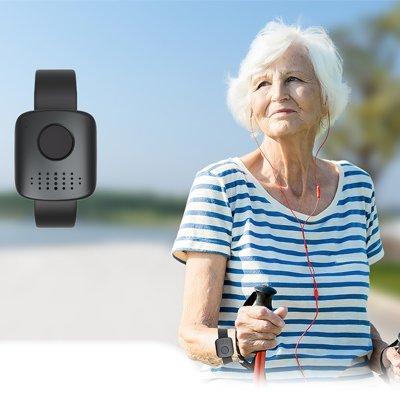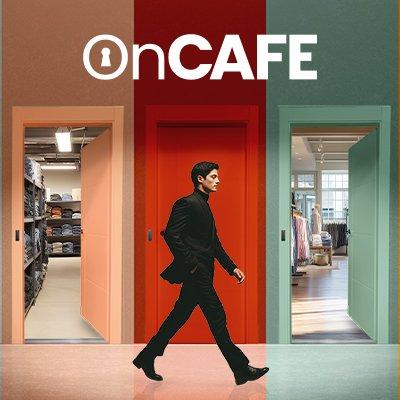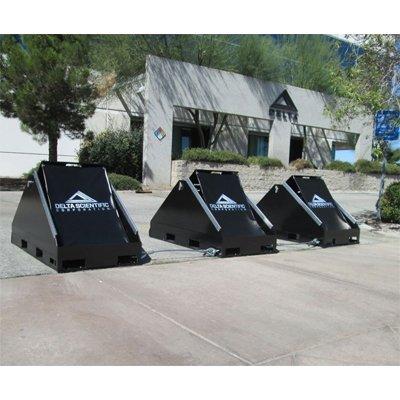Check Out Our Special Report On Casino Security
Which Security Markets Are Likely To Embrace The Cloud?
- Physical security market embraces cloud due to improved cloud offerings.
- Cloud applications like Office 365 and Salesforce.com are standard in business.
- Security markets overcome concerns, adopt cloud solutions for efficiency.
Editor Introduction
Cloud applications are an everyday facet of business these days, exemplified by systems such as Office 365, Salesforce.com and Dropbox. The physical security market is also embracing the cloud after overcoming some initial concerns and thanks to improvements in cloud offerings. We asked this week’s Expert Panel Roundtable: Which security markets are likely to embrace the cloud?
While the cloud might have been considered hype a few years ago, more organizations are becoming interested in a software-as-a-service (SaaS) model for video surveillance, access control, and other physical security applications that follow the digital transformation strategies already implemented by IT departments. From large corporations and financial institutions to smaller businesses with no corporate network infrastructure, organizations of all sizes are seeking easier and more flexible ways to manage their security infrastructure growth and costs. A cloud-based system is easier to maintain, can be safer from cyberattacks, and offers the most up-to-date features and functionality. Today, vendors are also leveraging the cloud to develop creative security and business applications that were once considered unrealistic or economically impractical. The ability to easily share data across departments and locations, for instance, can aid investigations by allowing different organizations to securely collect, manage, and share video evidence and other relevant case information.
The better question might be: Which security markets aren’t likely to embrace the cloud? In reality, cloud-based services have wider applicability than previously thought possible. In the past, organizations had to be intentional about the use of cloud-based systems, having to go in to download, install and patch software. Now, cloud is running in the background across a large number of applications as part of our everyday lives, and it’s poised to extend into helping deliver solutions for business needs. Some of the specific markets where cloud is ready to be implemented today are in retail and hospitality applications, property management and commercial real estate, and growing enterprise organizations with a need to streamline management of security operations for geographically dispersed locations.
I believe all markets will move to the cloud without exception. There is absolutely no reason why a certain security market would not move to the cloud. The advantages are obvious: economies of scale, better security, flexibility, scalability and simplified management. The real question is to what kind of cloud a market will move. The consumer security markets have been moving mainly to common clouds like Amazon (e.g. Ring) and Google (e.g. Nest), the high-end security markets have mostly moved to large private clouds to operate their city surveillance, and Eagle Eye Networks’ Cloud VMS has a strong penetration in the B2B segment to bring surveillance to the cloud for entrepreneurs, retailers, schools and business. The drivers for the move are always the same and will eventually apply to all security markets, it’s just a matter of time.
Perhaps one of the greatest benefits of cloud-based IP systems is the ability to manage and administer multiple locations and devices in real-time and across the globe. Having the ability to program systems centrally and manage numerous individual remote sites is an intrinsic benefit of a system that relies solely on the network. This is why so many chose to move to IP video systems, and why schools, hospitals, governments and multinational corporations are now investing in IP access control. However, this isn’t the only reason to select a cloud-based system. Functionality, efficiency, ease of use and of course cost should all be considered. Cloud access control can significantly reduce costs. After all, there is no need for a physical local server, an operating system, expensive IT infrastructures, or personnel to manage its upkeep. It’s more a case of “when” security markets will embrace the cloud rather than “which.”
There are two segments in the cloud market—public and private. The public segment is the VSaaS market, which currently suffers from high costs, unpredictable video transmission quality, and security concerns for storage in the public cloud. The cyberbreach of Capital One is a prime example. Because of this, we believe, until these problems are addressed, subscriptions to VSaaS services come from low-end users who don’t want to deal with video surveillance management. The private cloud segment is more often used by enterprise-class organizations with multi-site locations, such as universities, retail franchises, and financial institutions. As each site deploys their own video and analytics management systems, there is a need to centralize the data capture in one command center. Preserving the highest-level video quality, as well as minimizing risk of data compromise, is essential. For this reason, the private cloud will see greater adoption among entities managing sensitive information.
When it comes to the use of cloud systems for security, the United States is at least three to five years ahead of Europe, with rapid adoption of the technology in the market as buyers there have quickly grasped the inherent security, integration and convenience benefits. Within Europe, the United Kingdom tends to drive market behaviour first, so we are likely to see an increase in cloud usage appearing there as an indication of the direction of Europe as a whole. Within the market sectors themselves, all the signs are that currently cloud tends to appeal to smaller end user businesses rather than large corporates, and private rather than public sector. Examples include small schools, shops and small offices. This is perhaps because smaller organizations tend to be more flexible and receptive to new technology, but also due to the cost and staffing implications of running an in-house IT team.
Education leaders are constantly seeking innovative technologies that advance the safety and learning of their occupants, and they frequently turn to access control and the protection of smart devices. With the adoption of this type of technology, smartphones can replace traditional paper visitor badges, electronically granting or denying access to areas of a building or campus. Security teams can access more detailed information to solve issues quickly, if one were to occur. Smart devices house an abundance of sensitive data and have transformed the way students learn. Whether these devices are provided or are part of a BYOD (Bring Your Own Device) program, cloud technology can significantly heighten defenses against data breaches and other threats. By taking the steps to tighten cybersecurity measures, schools and campuses can focus more on student learning and well-being.
For banks, retailers and other companies deploying smart surveillance systems with AI at multiple locations, data aggregation and analysis at the backend are key. Surveillance footage is no longer merely archived. Now, it is also leveraged for deep learning activities to train systems to be more predictive. For this reason, security customers in the financial, retail, and smart city sectors are taking advantage of edge-to-cloud strategies to enhance data management. In the cloud, data doesn’t sit still. Instead, following initial video ingestion and basic video analytics at the edge, deep learning analytics software in the cloud delivers intelligent insights for better decision-making. One of the key technologies driving performance in cloud environments are high-performing hard disk and solid-state drives, which are designed for churning through AI data. Cloud servers employing these enterprise-class drives can scale to petabytes of data captured from thousands of cameras and sensors.
Editor Summary
From education to banks, retailers and even large corporations, it’s a long list of markets that are in the process of embracing cloud applications for physical security, including video and access control. As our Expert Panelists point out, eventual widespread use of the cloud is inevitable – just a matter of time; a matter of when, not if. As cloud applications accelerate, they provide a new level of connectivity and functionality for physical security systems and even address continuing concerns such as cybersecurity.
Expert commentary
Security beat
The Key To Unlocking K12 School Safety Grants
DownloadHoneywell GARD USB Threat Report 2024
DownloadPhysical Access Control
DownloadThe 2024 State Of Physical Access Trend Report
DownloadThe Security Challenges Of Data Centers
DownloadClimax Mobile Lite: Advanced Personal Emergency Response System (PERS)
Hanwha Vision OnCAFE: Cloud-Based Access Control for Modern Enterprises
Delta Scientific MP100 Portable Barricade Solution



























